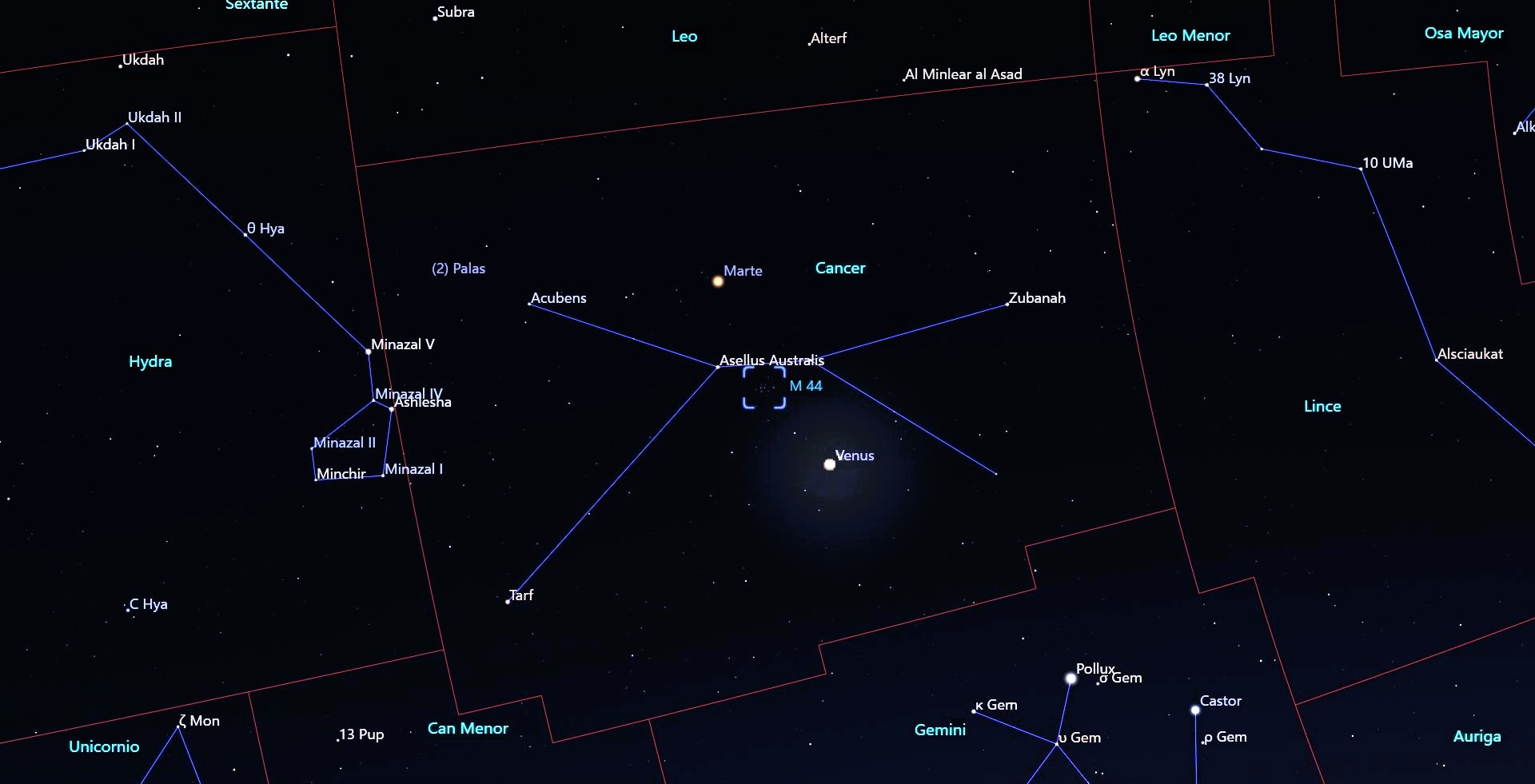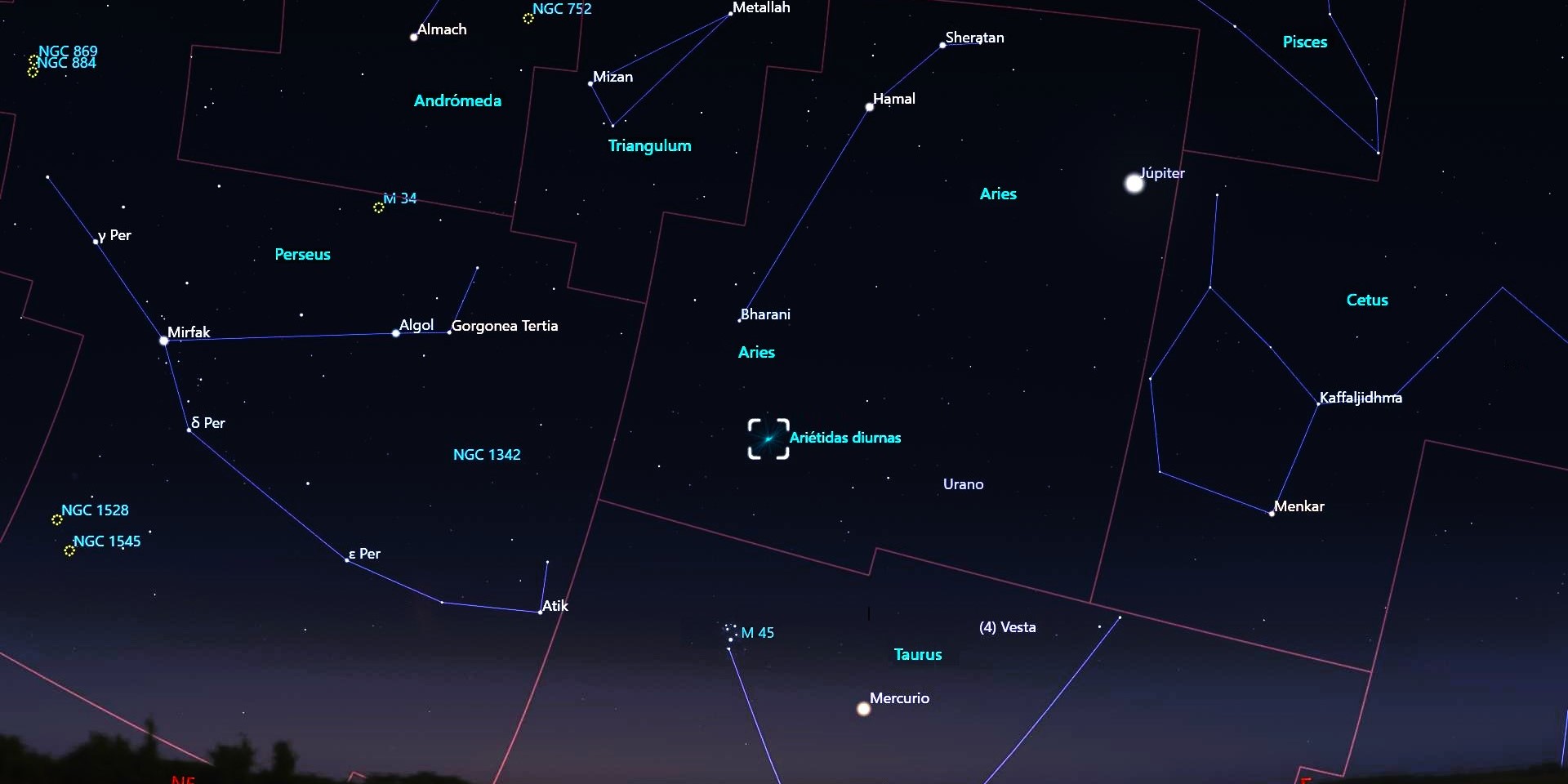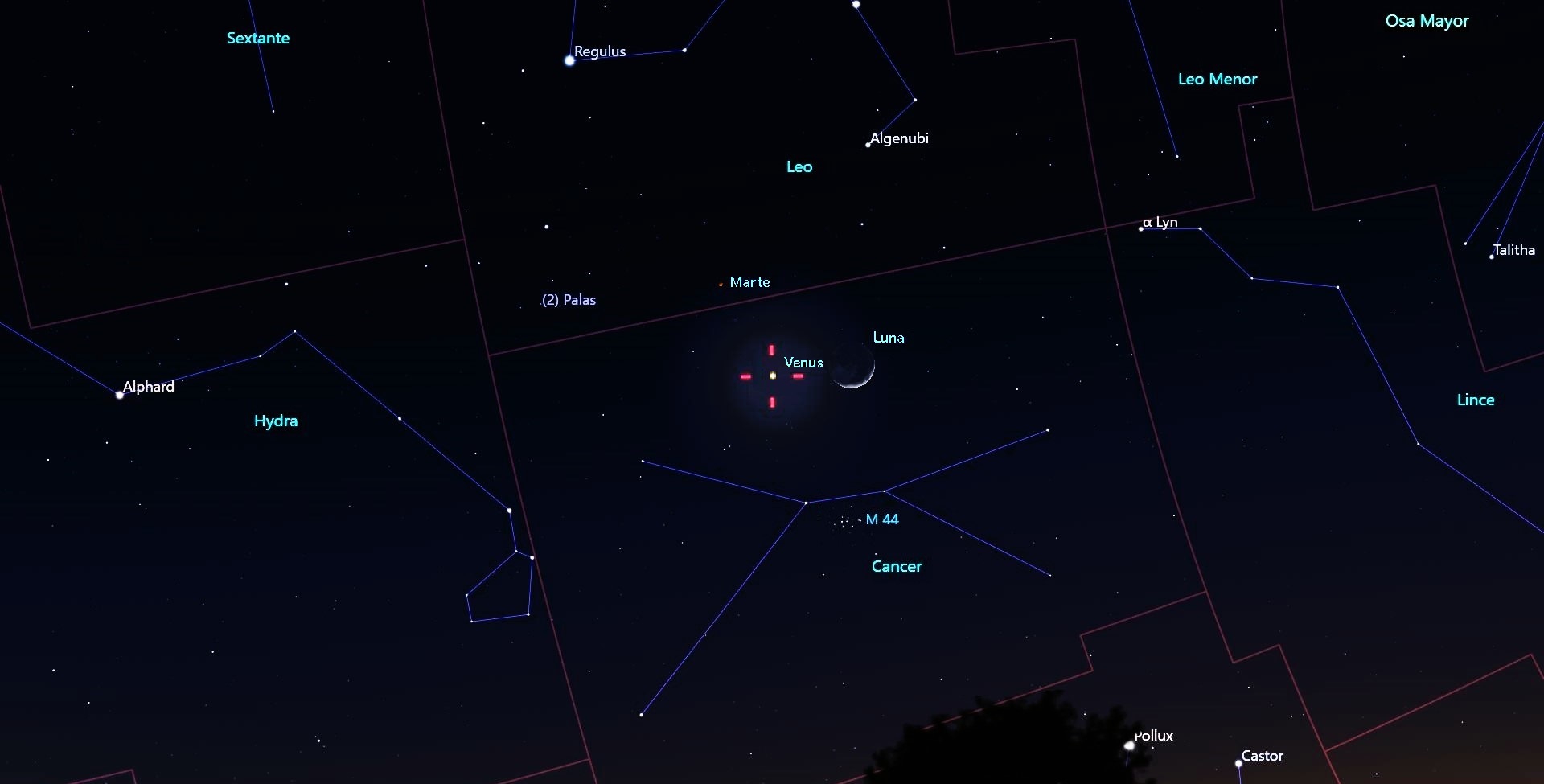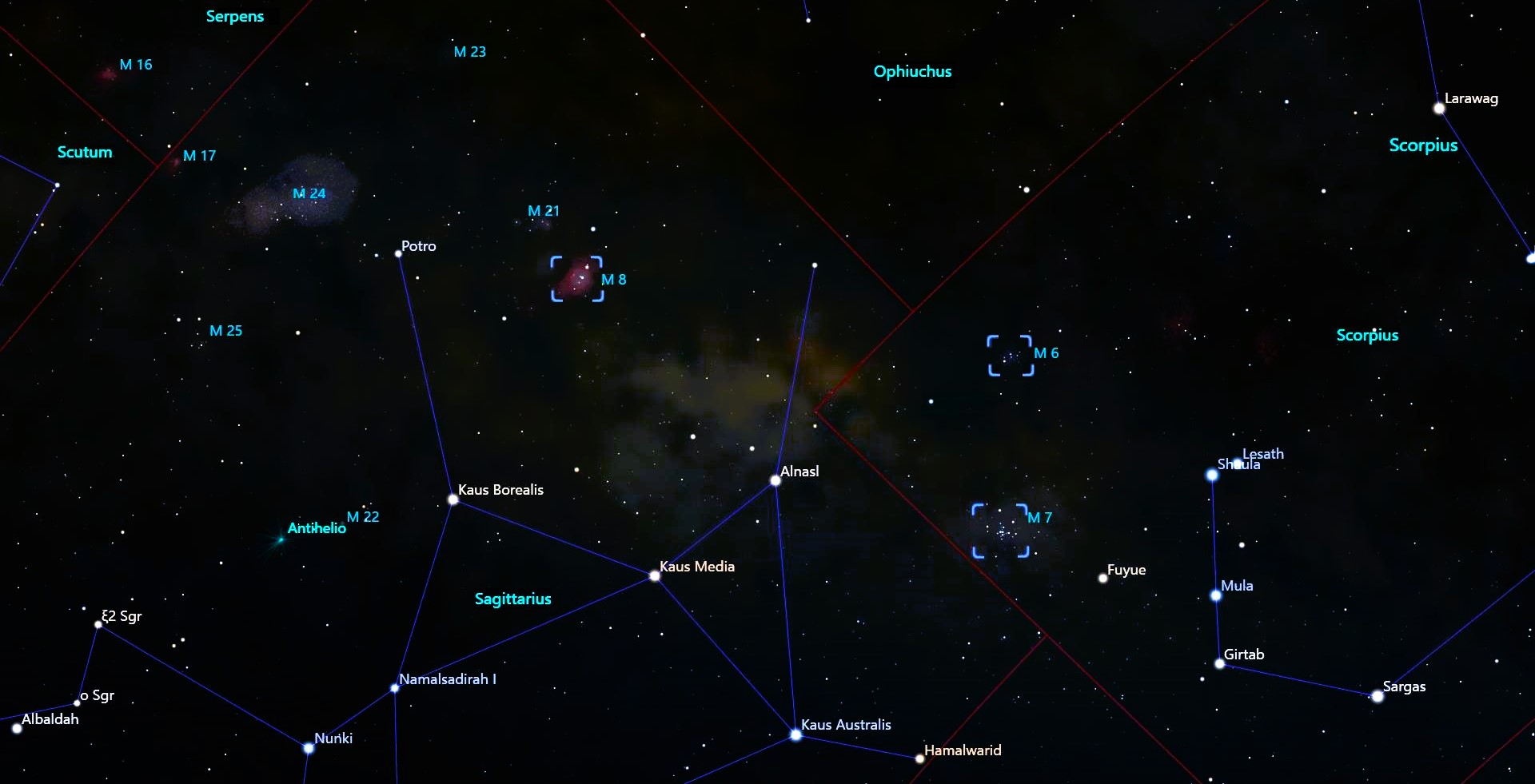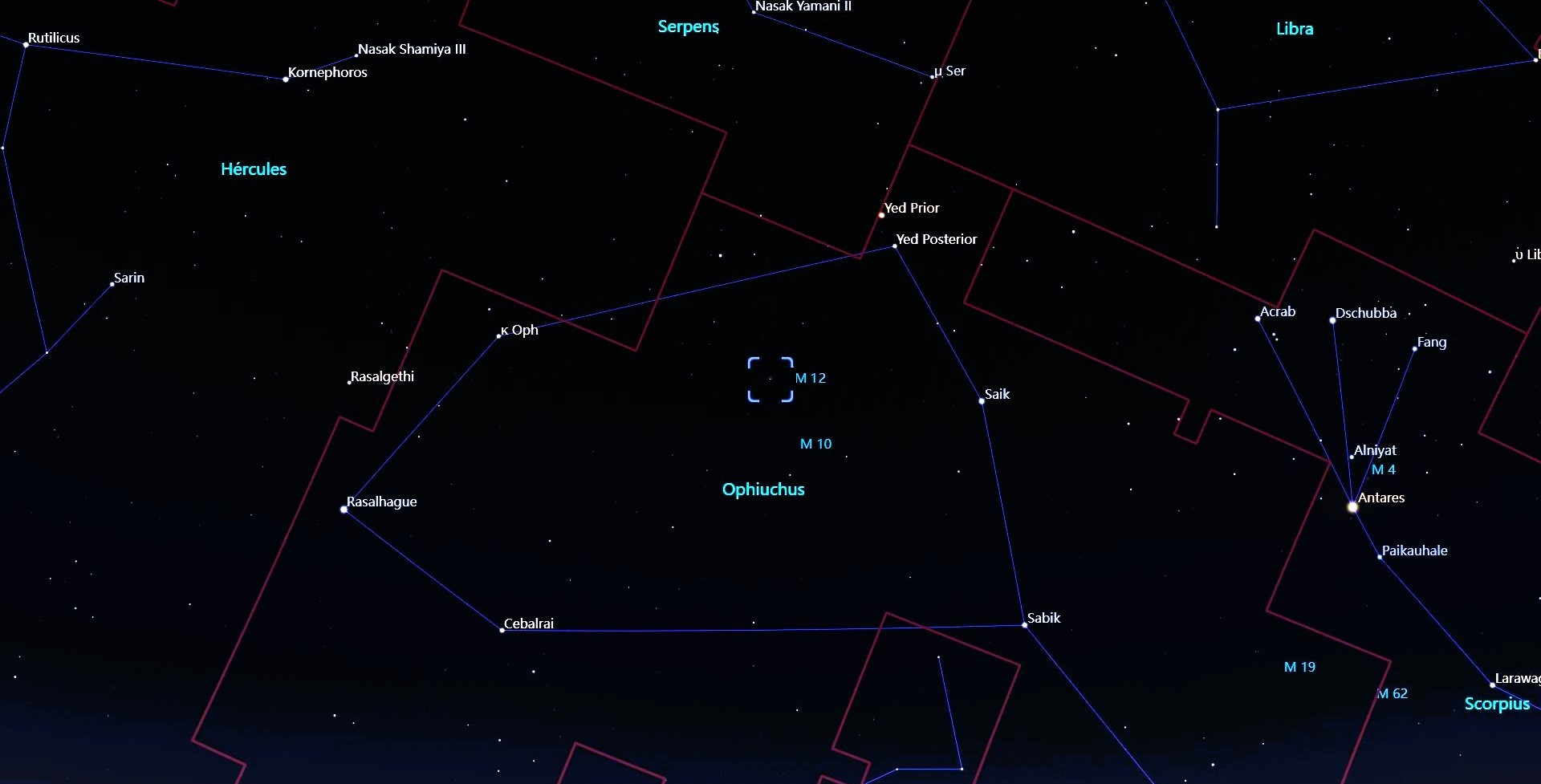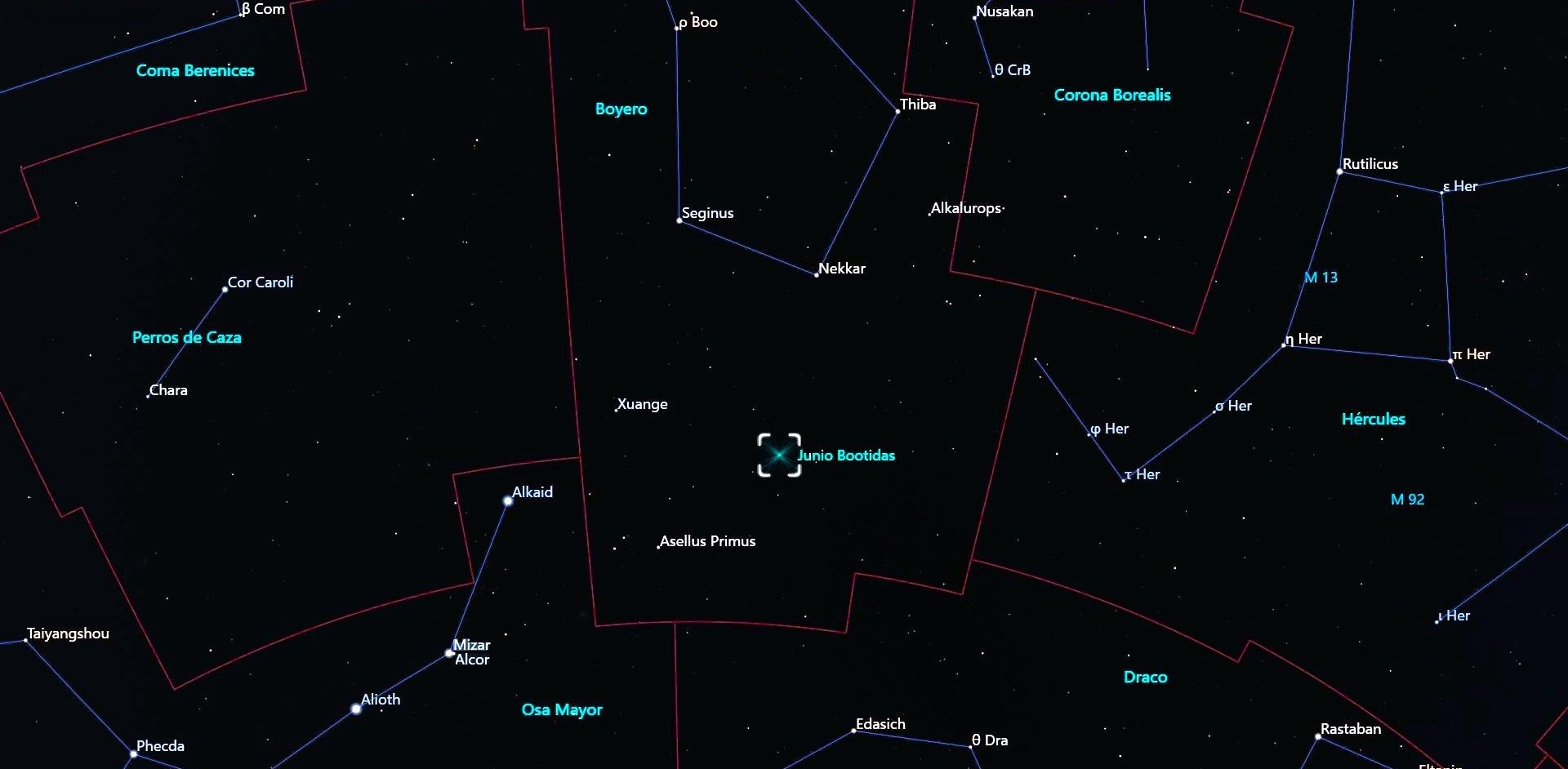Astronomical events of the month of June 2023
Summer has arrived, one of the most anticipated seasons of the year, here we will tell you when it starts. It is also a time of travel, so we will make one of the history of astronomy, we will remember one of the great observers of the sky: Giovanni Cassini. We invite you to observe the open star cluster M44, the Manger, which will be visited by the planets Mars and Venus. Among the conjunctions of this month, the one starring the Moon and Venus stands out. If the weather conditions allow it, we will enjoy a couple of meteor showers, the Arietids and the Bootids. Likewise, we will be able to observe, in the direction of the Scorpio and Sagittarius, several Messier objects, here we present only some of the most attractive. In another region, and as a challenge of the month, around the Ophiuchus constellation, we invite you to look for and observe another interesting Messier object, M12. We cannot conclude the month without the phases of the Moon.
Welcome summer
The Sun stands still, this is the meaning of the word solstice. During the summer solstice, in the northern hemisphere, it is the longest day of the year. Astronomically, it is the moment of the year in which the north pole of the Earth points more directly to the Sun. Marking the beginning of summer north of the equator, and that of winter south, which this year will be on June 21, at 08:57, Central Mexico time.
A famous Renaissance astronomer
Giovanni Domenico Cassini was born in Perinaldo, Italy, on June 8, 1625, and died in Paris, France, on September 14, 1712. At the age of just twenty-five, he was a professor and professor of astronomy at the University of Bologna. He was a great observer of the solar system, in 1665 he discovered and measured the rotational movement of Jupiter, in 1666 he did the same with Mars and Venus. In 1668 he produced tables of the motions of the four Galilean satellites, laying the groundwork for the Danish astronomer Olaf Roemer to use these results to calculate the speed of light. In 1669 he was appointed director of the Paris Astronomical Observatory, there he discovered, between 1671 and 1674, four satellites of Saturn: Iapetus, Rhea, Tethys and Dione, adding them to the one already discovered by Huygens.
In 1675 Giovanni Cassini observed a discontinuity in Saturn's rings, the separation between the A (outer) and B (inner) rings, which had been detected 10 years earlier by William Balle and is now known as the "Cassini Division".
It has other great achievements such as establishing the distance between the Earth and the Sun, with only 7% below the current value, as well as the distances of Mars, and the other planets, from the Sun, based on Kepler's third law. .
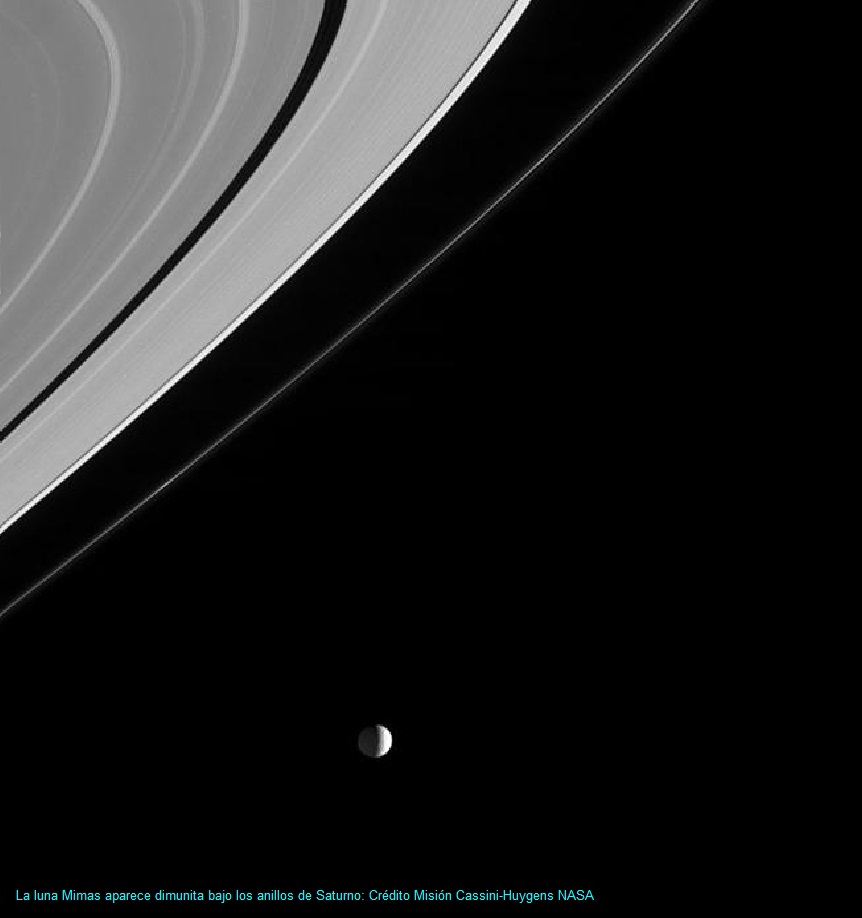
The Manger is visited by Mars and Venus
The open cluster M44 or NGC 2632, popularly known as the Manger or Beehive Cluster, is located in the direction of the constellation Cancer, about 182 parsecs or 593 light-years from us. It is estimated to be 625 million years old and is one of the largest concentrations of nearby stars, reduced to a space of 23 light years in diameter. During the first 15 days of June, we will witness the visit that the Crib will receive from the planet Mars, which will be making its maximum approach on June 2, at only 10.4 minutes of arc; and Venus, which will be making its closest approach on June 14, just 47.9 arc minutes from the cluster. So we invite you to dust off binoculars and telescopes so as not to miss these approaches, observable in the evening twilight, of the mentioned dates, towards the northwest of the celestial sphere.
A daytime meteor shower
This peculiar diurnal Arietid meteor shower will be active between April 14 and June 24, with its maximum on June 10. It is called diurnal since the best time to detect fleeting meteors will be dawn on the 11th, with the maximum observable rate being 50 meteors per hour; Despite the fact that the radiant, the point from which the rain appears to come, is very close to the horizon, it is expected that some meteors will be able to be seen. The radiant is in the direction of the constellation Aries, towards the north-eastern part of the celestial sphere. The main body responsible for the shower has been identified as comet 96P/Machholz.
Three jewels of the firmament
Three of the brightest and most striking objects in the night sky, the Moon, Venus and Mars, will have a postcard-worthy close-up at dusk on June 21. In particular, the Moon and Venus will be in conjunction, that is, they will share one of their equatorial coordinates, Right Ascension. the moon will be only 3° 41' north of Venus and, very close to them, Mars will appear. All this in the direction of the constellation of Cancer, towards the northwest of the celestial sphere.
Set of aces
In the regions close to Sagittarius and the Scorpio we can more easily locate what ancient skygazers knew as the Milky Way. Today we know that the center of our galaxy is located in that direction and, as expected, there we can find an endless number of celestial objects. Now we present three extremely interesting objects.
The open cluster M6, Cluster of Butterflies or NGC 6405 in the constellation of the Scorpion, is about 1,600 light years from us, in an area between 12 and 25 light years and with an apparent brightness of 4.2. It is composed of 80 extremely young stars, with ages between 50 and 95 million years. It is believed that Ptolemy observed it together with the cluster M7, but the discovery is officially attributed to Giovanni Battista Hodierna, in 1654. Messier included it as number 6 in his catalog, in 1764.
The open cluster M7, NGC 6475 or Ptolemy's Cluster, was discovered and described by Klaudios Ptolemy in the Almagest, in the year 130, as "a nebulous cluster after the sting of Scorpion"; Messier incorporated it into his catalog as M7 in 1764. It is estimated to be 220 million years old, formed by about 100 stars about 800 light years from Earth. Its apparent magnitude m = 3.3 allows it to be located with the naked eye in dark skies.
Finally, the Lagoon Nebula or M8, is about 5,000 light years away from us, with a diameter of 75 light years, in the direction of the constellation Sagittarius. It was discovered in 1747 by Guillaume Le Gentil and is an H II (Hydrogen and ionized plasma) region caused by wind effects from young massive stars in the process of formation.
A veteran globular cluster
M12 or NGC 6218 is a sparse concentration of stars towards the center of the globular cluster that is located in the constellation Ophiuchus. It was discovered by Charles Messier in 1764, who described it as a "starless nebula." It is round and its light is dim. M12 is located at a distance of about 16,000 light-years from Earth, has a diameter of 75 light-years, and It groups some 100,000 evolved stars, whose estimated age is 12.6 billion years.
Even with clear, dark skies and no light pollution, the cumulus is not visible to the naked eye, but binoculars or small telescopes will suffice to observe a small, round, diffuse cloud. With telescopes with an aperture greater than 6 inches (20 cm) it is possible to detect stars.
Bootis, the world's first farmer
From the region of Bootis, the first farmer in the world, according to Greek mythology, this meteor shower will be observed, the June Bootids. They will be in activity between June 22 and July 2, with their maximum on June 27. The maximum observable rate will be variable, between 0 and 100 meteors per hour. The radiant is in the direction of the constellation Bootis. The main body responsible for the shower has been identified as comet 7P/Pons-Winnecke. The best time will be after dark on the 27th, towards the northeast part of the celestial sphere.
Phases of the Moon (Central Mexico time).
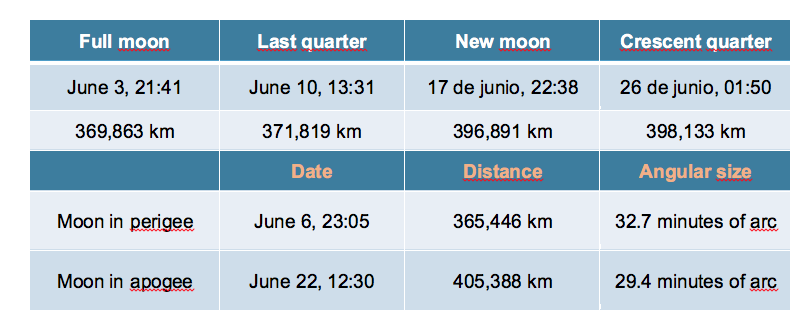
Contacts:
Dr. Agustín Márquez Limón (amarquez@inaoep.mx), Coordinación de Astrofísica-INAOE
Dr. Vicente Hernández Hernández (planetariodecozumel@gmail.com), Red de Planetarios del Estado de Quintana Roo
Dr. Raúl Mújica García, (rmujica@inaoep.mx), Coordinación de Astrofísica-INAOE y Noche de las Estrellas
Luis Enrique Erro # 1, Tonantzintla, Puebla, México, Código Postal 72840, Tel: (222) 266.31.00, difusion@inaoep.mx
This work is licensed under a Creative Commons Attribution-NonCommercial-NoDerivs 2.5 Mexico License.


